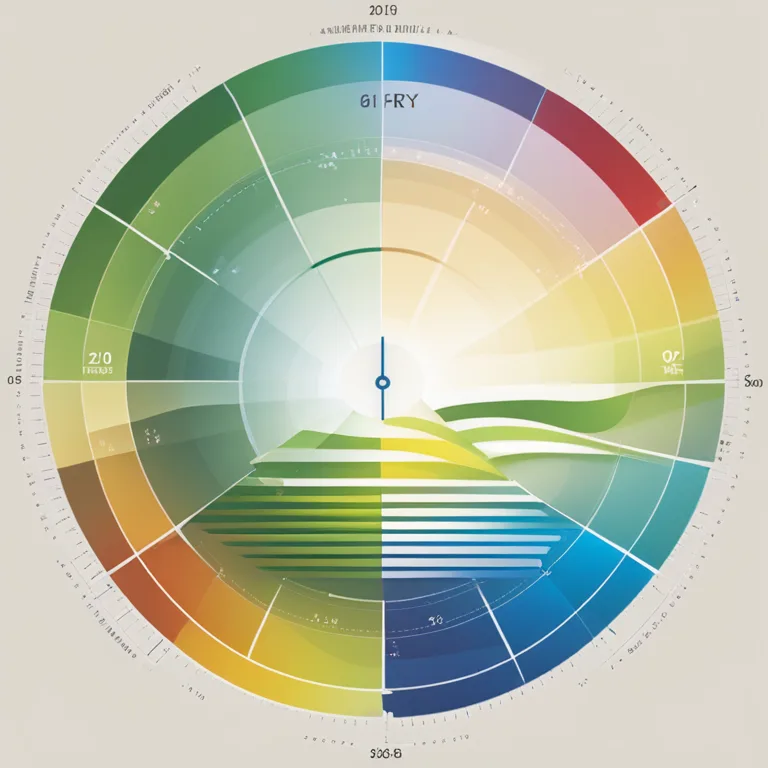
Biorhythm Life Cycles: Patterns of Physical, Emotional, & Intellectual Energy
Delve into the concept of biorhythm life cycles and discover how they can influence your daily performance and overall well-being.
article by Adrian Wallace
Introduction to Biorhythms
Biorhythms are often described as the rhythmic cycles that our bodies experience, believed by some to affect our physical, emotional, and intellectual capabilities. According to the theory of biorhythms, which originated in the late 19th century, these cycles begin at birth and influence us throughout our lives. While the scientific community remains skeptical about the influence of biorhythms on our day-to-day life, there is a niche interest in charting these rhythms to predict periods of peak performance or potential vulnerabilities.

The Three Primary Cycles
There are three core biorhythm cycles: the 23-day physical cycle, the 28-day emotional cycle, and the 33-day intellectual cycle. The physical cycle is thought to influence factors such as coordination, strength, and well-being. The emotional cycle purportedly affects mood, creativity, and sensitivity. The intellectual cycle supposedly governs analytical thinking, decision-making, and logic. By mapping out these cycles, some believe it's possible to anticipate the best days for engaging in specific activities.

Critical and High Days
A significant aspect of biorhythms is the concept of critical and high days. Critical days occur when a cycle transitions from a high phase to a low phase, or vice versa. During these times, individuals may feel out of sorts or less efficient in activities related to the respective cycle. Conversely, high days are identified when one's cycles are at their peak. On these days, one could experience heightened abilities corresponding to the cycles.

Calculating Your Biorhythm
With the advent of technology, calculating personal biorhythms has become more accessible through web-based calculators and apps. To determine your biorhythm, you simply enter your birth date, and the biorhythm calculator provides a chart representing your physical, emotional, and intellectual cycles. Users of such tools often plan their activities—such as important meetings, athletic events, or social gatherings—around their optimal cycle times.

Biorhythms in Modern Life
While mainstream science does not validate biorhythms, interest in holistic and alternative wellness practices keeps this concept alive. Many individuals in 2024 and beyond use biorhythm calculations as a self-help tool, alongside astrology and numerology. Though biorhythms are not evidence-based, those following the cycles believe in the potential benefits for personal insight and self-reflection.
Integrating Biorhythms into Your Routine
For those interested in integrating biorhythms into their daily lives, it is suggested to begin by observing how your energy levels fluctuate over the course of the primary cycles. Keeping a diary or using a tracking app can help correlate your personal experiences with the biorhythm predictions. Whether you find correlation or not, proponents argue that the conscious reflection on one’s own patterns can have intrinsic benefits.
Conclusion
The fascination with biorhythm life cycles persists in the sphere of self-awareness and personal improvement. Although scientific backing is lacking, those who embrace biorhythms enjoy the rhythm they impart to life's symphony. As we move further into the future, the amalgamation of technology and personal health may uncover new ways to engage with the biorhythm theory, perhaps providing innovations in how we understand our body's natural rhythms.
Published: 12/28/2023
Modified: 12/28/2023
More predictions
Come back here soon to learn more about yourself and your future


Navigating Biorhythm Cycles
Explore the concept of biorhythms, their cycles, and examples of how they influence our daily lives.


The Reality Of Biorhythm Compatibility
Unravel the truth behind biorhythm compatibility and its role in personal relationships and daily life.


Biorhythm Compatibility: Fact Or Myth?
Explore the concept of biorhythm compatibility to discover if there's a real connection between our biocycles and relationship harmony.